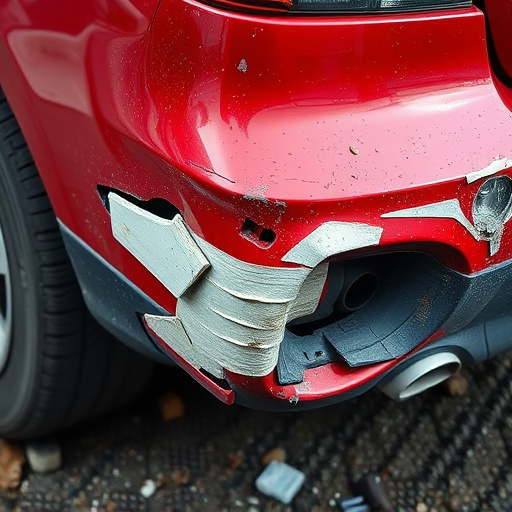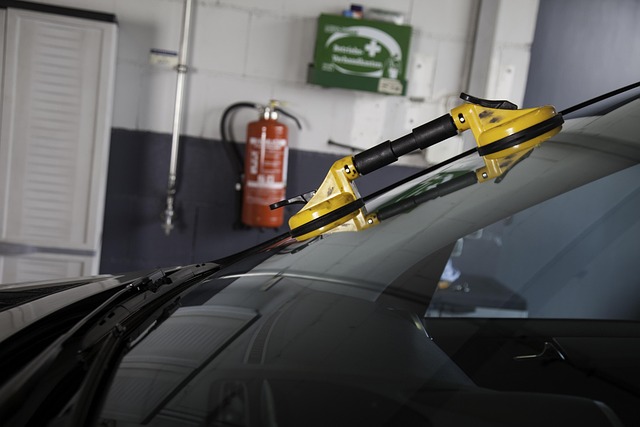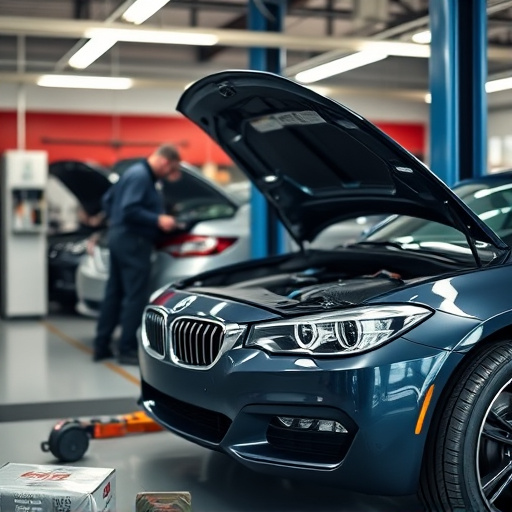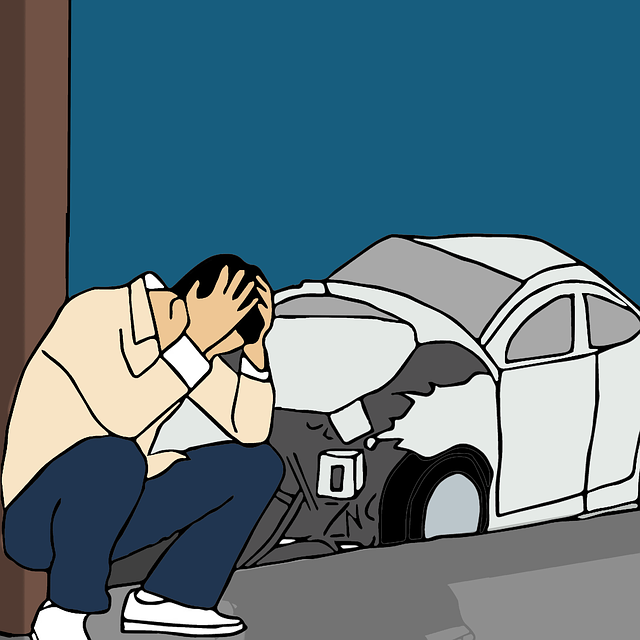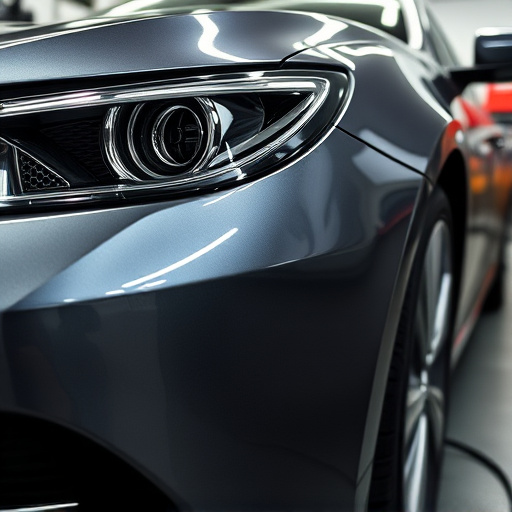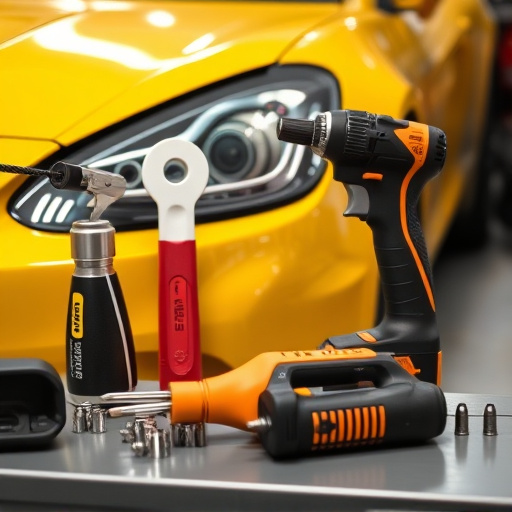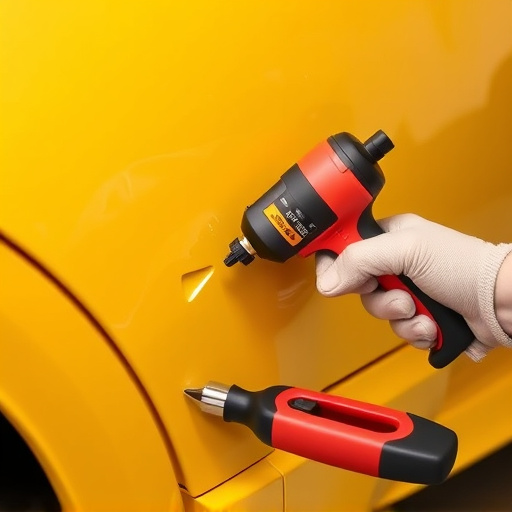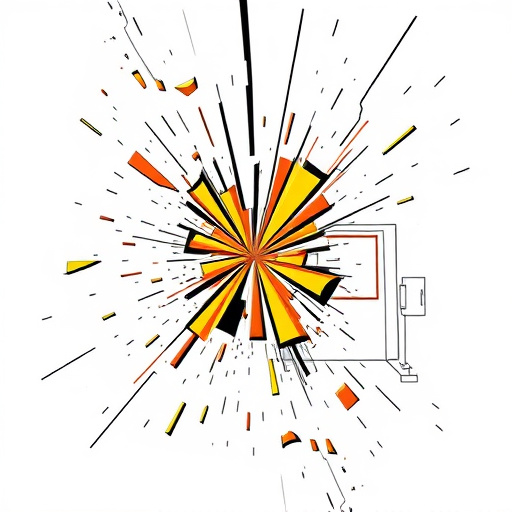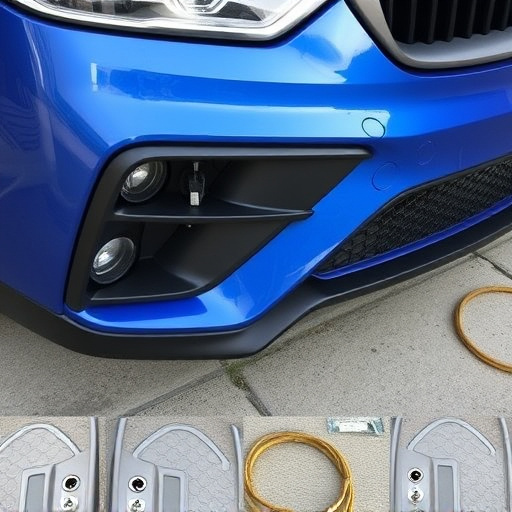Emblem replacement after a collision requires more than meets the eye. Hidden misalignments in body panels can cause structural damage and aesthetic imperfections. Professional shops use CAD systems, hydraulic presses, and advanced tools to ensure precise alignment, addressing potential gaps, bulges, or asymmetries. Proper preparation, measurement, marking, and installation techniques prevent alignment issues, maintain vehicle appeal, and ensure optimal system performance.
Emblem replacement may seem like a straightforward task, but it often requires concurrent body panel alignment work due to potential collision damage. When an impact occurs, even seemingly minor, panels can bend or deform, affecting not just the visible surface but the underlying structure. This intricate dance of repair involves meticulous alignment to ensure the new emblem sits perfectly and the vehicle regains its pre-collision aesthetic integrity.
Understanding these connections between emblem replacement and body panel alignment is crucial for achieving optimal results after a collision.
- Understanding Emblem Replacement: When It's More Than Meets the Eye
- The Impact of Collision Damage on Body Panel Alignment
- Best Practices for Ensuring Precise Alignment During Emblem Replacement
Understanding Emblem Replacement: When It's More Than Meets the Eye

Emblem replacement might seem like a straightforward process, but it often involves more than just swapping out a damaged or outdated badge. In many cases, especially after a collision, the emblem’s successful installation requires careful frame straightening and precise vehicle body shop expertise to ensure proper alignment. This is because car dent repair goes beyond the visible surface; it addresses structural integrity as well. A simple emblem replacement can expose hidden misalignments in the vehicle’s body panels, which can only be corrected through meticulous frame straightening techniques.
Such work demands experience and specialized tools to adjust the metal without compromising the overall aesthetics or safety of the vehicle. Professional vehicle body shops employ advanced methods like computer-aided design (CAD) systems and hydraulic presses to handle these complex adjustments, ensuring that the replacement emblem not only looks perfect but also aligns perfectly with the vehicle’s original design.
The Impact of Collision Damage on Body Panel Alignment
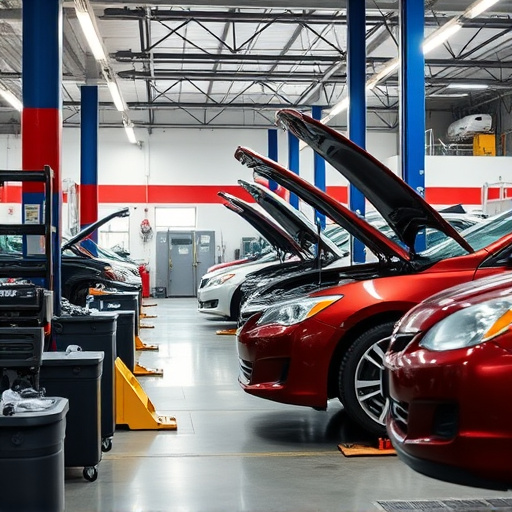
Collision damage can significantly impact the alignment of a vehicle’s body panels, especially when an emblem replacement is involved. In the event of a collision, whether it’s a minor fender bender or a severe crash, the force and pressure exerted on the car’s exterior can cause misalignments in various components. The body panel alignment refers to the precise positioning and fitting of each panel, ensuring a seamless and straight finish across the vehicle’s surface. When an emblem is damaged or needs replacement due to collision, it may no longer align perfectly with the surrounding panels, creating visible gaps, bulges, or asymmetries.
This misalignment can be more than just an aesthetic issue; it may also indicate underlying structural damage that requires attention from a professional collision repair shop. Auto dent repair specialists understand that emblem replacements often necessitate body panel alignment work to restore the vehicle’s overall appearance and safety. In many cases, the process involves meticulous adjustments and refinements to ensure that every panel is correctly aligned, resulting in a smooth finish that meets manufacturer standards. A well-aligned car not only looks better but also ensures optimal performance of its various systems, including lighting, wiper blades, and door closures, which can be affected by misalignments caused by collision damage.
Best Practices for Ensuring Precise Alignment During Emblem Replacement
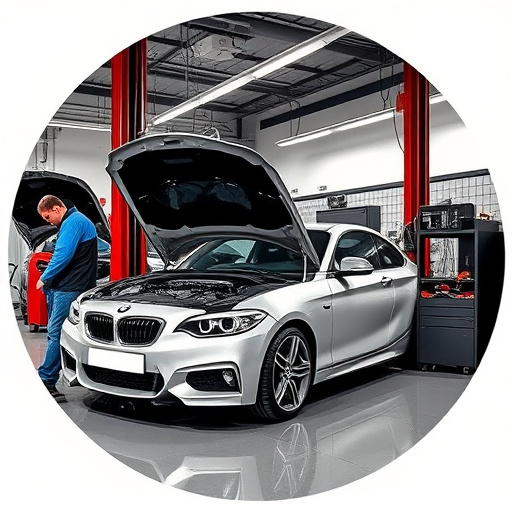
When undertaking emblem replacement, it’s crucial to follow best practices for precise alignment. This involves meticulous measuring and marking prior to removing the old emblem. Using tools like aligners or specific body shop software can help ensure accurate positioning of the new emblem.
Proper preparation includes checking for any underlying damage that may require auto body work, such as dent repair. Once aligned correctly, carefully install the new emblem, ensuring it is securely fastened. Remember, impeccable alignment goes a long way in maintaining your vehicle’s aesthetic appeal and preventing future alignment issues stemming from an improper replacement. Consider these steps to achieve a professional result and avoid potential collision with surrounding panels.
When performing emblem replacement, especially after an accident or collision, it’s crucial to recognize that body panel alignment is a critical step. Collision damage can disrupt the precision of vehicle panels, so meticulous alignment techniques are essential to ensure a flawless finish. By following best practices and understanding the intricate relationship between the emblem and the surrounding panels, professionals can effectively address alignment issues, guaranteeing both aesthetic appeal and structural integrity during the emblem replacement process.
